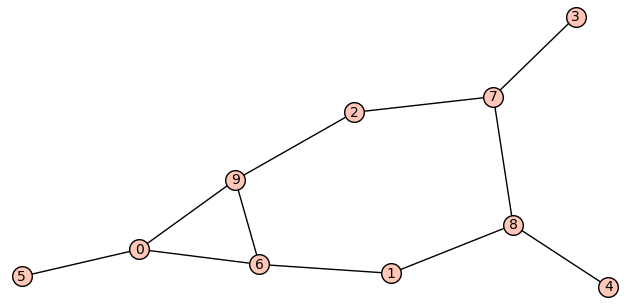Consider the class of simple connected bicyclic graphs on $10$ vertices. Let $A$ be the adjacency matrix of any such graph.
Consider the class of simple connected bicyclic graphs on $10$ vertices. Let $A$ be the adjacency matrix of any such graph. Let $A(i)$ for $i\in{1,2,3,\ldots, 10}$ denote the principal submatrix of $A$, obtained by deleting the $i$-th row and $i$-th column of $A$. Now how to find those graphs from the collection for which nullity of $A(i)$ (for each $i=1,2,3,\ldots, 10$) is $1$ or equivalently rank of $A(i)$ (for each $i=1,2,3,\ldots, 10$) is $8$.
My attempt:
def principal_submatrix(m, s, sort=False):
if sort:
s = sorted(s)
return m[s, s]
def principal_submatrices(m, k):
S = Subsets(range(m.ncols()), k)
return [principal_submatrix(m, s, sort=True) for s in S]
for g in graphs.nauty_geng("10 -c"):
if g.size() == 11:
A=g.adjacency_matrix()
From this point, can any body please help me to complete the final code



Please help to complete the code, if possible. I am unable to extract the principal submatrices part.
Your code will brute-force explore the set of all connected graphs of 10 vertices, a not-so-small subset of the set of all graphs on 10 vertices, of size
2^100, that is about1.26*10^30. This seems unpractical, unless you want to build a generator of such graphs and get (a few) examples.It seems faster and simpler to start from a simply connected acyclic graph (there are only 3628800 of them) and add them two cycles. You have to specify if you want those two cycles strictly separated or not and how you want them connected to the acyclic graph.
I need only the bicyclic graphs on $10$ vertices. Even if you can write the code correctly, it will be fine for me.
I was wrong about the size of the set of connected graphs on 10 vertices :
Sorry for the noise...
No, it's fine.